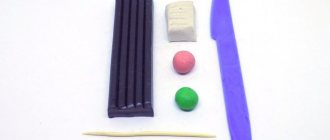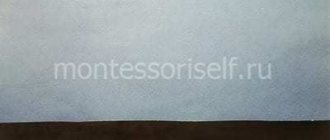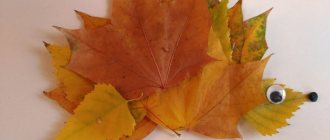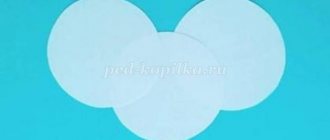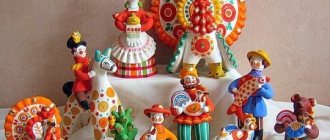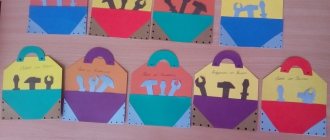On the topic: methodological developments, presentations and notes
Summary of a speech therapy lesson for a teacher - speech therapist S. V. Turovskaya. Summary of the lesson "Sound "U""
Subject. Sound U. Purpose. Strengthen the skills of clear pronunciation of sounds. Educational objectives: 1. To introduce children to sound...
Lesson notes in mathematics Lesson notes in mathematics in the middle group Topic: Plan (travel map) Program tasks: Develop the ability to navigate according to an elementary plan, correctly determine the relative position of objects in the
Lesson notes in mathematicsLesson notes in mathematics in the middle group Topic: Plan (travel map) Program objectives: Develop the ability to navigate according to an elementary plan, correctly...
Summary of a lesson on the basics of safety for children in the preparatory group: “Road literacy.” Summary of a lesson on the basics of safety for children in the preparatory group: “Road literacy.”
Abstract We are all parents and educators trying to answer the question: “How to ensure a safe and healthy lifestyle for our children?” Baby pop...
Lesson notes Lessons on speech development Notes of the final lesson on speech development “Visiting grandma”
Lesson notesClasses on speech developmentLesson notes on the final lesson on speech development “Visiting grandma”...
Summary of an open lesson in a preparatory group for school Summary of an open lesson in a preparatory group for school Summary of a lesson in a preparatory group of a teacher-psychologist with hearing-impaired children
Date: February 21, 2012 Participants: children of the preparatory group Conducted by: educational psychologist Panova M.M. Goal: to promote the formation of…
Summary of a speech therapy session on overcoming lexical disorders. Lesson summary for the middle group for children with ODD (III period)
Target:
creating the image of a hedgehog using testoplasty.
Tasks:
- Educational:
consolidate ideas about wild animals; continue to learn how to sculpt animal figures from salt dough; develop the ability to use natural materials to design crafts. - Developmental:
to develop fine motor skills, artistic and creative abilities, the ability to finish something started. - Educational:
to cultivate the ability to see the beauty of the surrounding nature and respect for it. - Wellness:
create conditions for the formation of correct posture when working at a desk.
Integration of educational areas:
- Cognitive,
- speech,
- artistic and aesthetic,
- social-communicative,
- physical development.
Materials and equipment:
- salty dough,
- oilcloths for modeling,
- disposable plates,
- container with water,
- tassel,
- container with fir needles,
- laptop,
- TV,
- Power Point presentation.
modeling lesson on the theme “Hedgehog”
Program content: -Teach children to sculpt a hedgehog, conveying the characteristic features of its appearance. -Experiment with art materials to depict a hedgehog’s prickly “fur coat.” - Direct them to an independent search for means of figurative expression. -Develop a sense of form and composition ability. -Cultivate confidence and initiative in visual arts. Preliminary work.
-Presentation of a photo with the image of hedgehogs.
-Conversation about the appearance and lifestyle of hedgehogs.
-Reading the story “Hedgehog” by E. Charushin.
-Guessing riddles about forest animals.
-Reading of the poem “Hedgehog” by V. Shipunova:
The hedgehog is waiting for the bear cub, the hedgehog is gnawing on an apple. He will gnaw to the middle and leave half of the fragrant fruit for furry Mishenka. The fact is that the bear cub has been friends with the hedgehog since the cradle.
Materials, tools, equipment.
-Plasticine, for “needles”, different materials to choose from: sunflower seeds, toothpicks, matches, cocktail tubes, cut into pieces 3-5 cm long; -for the eyes and nose, material to choose from: beads, small buttons, seed beads, buckwheat grains; stacks, oilcloths, paper napkins and fabric “clearings” made of colored cardboard for stands (in the shape of irregular ovals).
Contents of the lesson.
The teacher asks the children two or three riddles about hedgehogs, for example:
Not green, but prickly - snorting at the Christmas tree!
The creeper is crawling, carrying needles, curled up into a ball - no head, no legs.
Crawling, carrying needles; As soon as anyone approaches, he curls up into a ball - no head, no legs.
Conversations about the appearance and lifestyle of hedgehogs. Presentation of a photo with the image of hedgehogs. After this, the teacher reads to the children G. Lagzdyn’s poem “The Prickly Hedgehog”: The hedgehog is prickly, But not angry! Just a hedgehog's clothes made of needles, finely sewn by masters, so that on occasion he could hide his legs and curl up into a round ball on a forest path. Here's some clothes so that they don't touch the hedgehog.
The teacher invites the children to make hedgehogs with long needles, on which they carry supplies to their holes to feed the little hedgehogs. He asks how to make needles. After the children’s answers, he shows toothpicks, matches, pieces of cocktail straws and advises using them to decorate the prickly hedgehog’s “clothes.” Then he wonders how the children will sculpt hedgehogs. Summarizes children’s suggestions and clarifies the technique of sculpting from a whole piece:
-take a lump of plasticine, roll out a ball and turn it into an egg - narrower in front, wider in back;
-we stretch out and sharpen the nose, slightly lift it up, as if a hedgehog is sniffing where the mushrooms grow;
-we decorate the hedgehog’s prickly fur coat, stick “needles” into the back, choose the material for the “needles” as you wish - sunflower seeds, toothpicks, matches, cocktail tubes, cut into pieces;
-decorate the muzzle - attach the eyes and nose; we choose the material according to our wishes - beads, beads, small buttons, buckwheat grains or small balls of plasticine;
-make mushrooms or apples and place them on the hedgehog’s back.
Children choose the color of plasticine at their request (yellow, orange, pink, gray, brown, etc.), material for “needles” (seeds, toothpicks, tubes, etc.), “clearings” made of colored cardboard for coasters and start sculpting.
At the end of the lesson, children place their hedgehogs in the “clearings” and transfer them to the general exhibition.
Used Books:
Lykova I.A. Visual activities in kindergarten: planning, lesson notes, methodological recommendations. Middle group - M.: "KARAPUZ - DIDACTICS", 2008.
“A Reader for Little Ones”, ed. L.N. Eliseeva.
